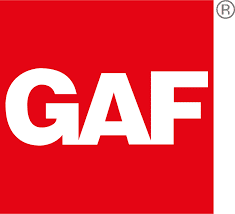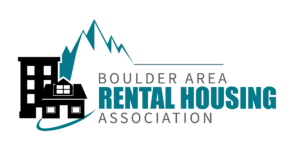Colorado’s winter landscape is as challenging as it is beautiful, especially for homeowners and commercial business owners. The state’s heavy snowfalls, although picturesque, pose a significant threat to the integrity of roofs. This article aims to guide homeowners and business owners through the necessary steps to address and prevent roof damage caused by Colorado’s harsh winter conditions, ensuring the safety and longevity of their homes and businesses.
Understanding the Impact of Snow on Roofs
Snow, while scenic, can be a formidable enemy to your roof. The sheer weight of accumulated snow can strain even the sturdiest roofs, leading to potential collapse in extreme cases. Here are examples of snow-related concerns if not properly managed:
- Weight of Snow: The most immediate concern with heavy snowfall is the weight it adds to the roof. Fresh snow can weigh approximately five pounds per square foot for each ten inches, but this can increase significantly if the snow is wet or packed. Colorado, known for its heavy snowfalls, can see accumulations that far exceed this, especially in areas with consistent snowfall. Roofs are designed to handle specific weight loads, and excessive snow accumulation can push these limits, risking structural damage or even collapse in severe cases.
- Ice Dams and Water Damage: Another critical issue for roofs during the Colorado winter is the formation of ice dams. These occur when heat from the attic melts the snow on the roof, causing water to trickle down and refreeze at the colder edges or gutters. This ice build-up can block further meltwater from properly draining, potentially leading to water backing up under shingles and seeping into the house. The resulting water damage can affect not only the roof but also the interior of the home or business, leading to issues like mold, mildew, and structural decay.
- Vulnerability of Different Roof Types: The design of a roof greatly influences its ability to withstand snow. Flat or low-pitched roofs are particularly vulnerable as they allow snow to accumulate more easily than steeper roofs, which naturally shed snow more effectively. The materials used in roofing also play a role; for instance, metal roofs tend to shed snow faster than asphalt shingle roofs.
Recognizing the signs of snow-related damage early is key to preventing more significant issues. Homeowners and business owners should be vigilant and look for indications of stress on their roofs, especially after heavy snowfalls or during rapid thawing cycles.
Discovering roof damage in the wake of a heavy snowfall can be daunting. However, taking prompt and appropriate actions can mitigate the severity of the damage and potentially save homeowners from more extensive and costly repairs later. Here’s what you need to know:
- Safety First: The foremost consideration should be safety. It’s crucial to avoid the risk of climbing onto a snow-covered or damaged roof. Such situations are hazardous and can lead to personal injury or further damage to the roof. If you suspect damage, it’s advisable to conduct a preliminary inspection from a safe location. This can be done from the ground using binoculars to get a closer look at the roof or by inspecting the attic space for signs of leaks, water damage, or structural issues.
- Preliminary Inspection: Look for visible signs of damage such as sagging, which might indicate that the structure is struggling under the weight of the snow. From the inside, check for any signs of water penetration or light coming through the roof. These inspections can help you assess the urgency of the situation and communicate effectively with professionals.
- Document the Damage: Taking photos or videos of any damage is crucial. These visual records are invaluable for insurance claims and for professionals assessing the roof’s condition. Document the extent of snow on the roof, any visible damage, and signs of leaks inside your home. Be as thorough as possible, capturing different angles and areas of damage.
- Use a Roof Rake for Snow Removal: If it’s safe to do so, and the roof is accessible from the ground, consider using a roof rake to remove some of the snow. This helps alleviate the weight on the roof and can prevent further damage. It’s important to do this cautiously to avoid damaging the roofing materials. Roof rakes are designed with long handles to allow you to pull snow off the roof while standing safely on the ground.
In cases where there’s significant damage or a high risk of interior damage from leaks, consider contacting emergency roofing services. Many roofing companies offer emergency services specifically for situations like heavy snowfall damage. They can provide temporary solutions, such as tarping, to prevent further interior damage until permanent repairs can be made.
Contacting a Roofing Professional
Once you have taken initial steps to mitigate further damage and documented the state of your roof, the next crucial phase is seeking professional assistance. Handling roof damage, especially when caused by heavy snow, requires expertise and experience that only professional roofing contractors can provide. Here’s what you need to know:
- Finding the Right Contractor: Choosing a reliable roofing contractor is key. In Colorado, where snow-related roof issues are common, many professionals have experience dealing with such problems. Look for licensed and insured contractors with good reviews and a track record in snow damage repair. Recommendations from friends, neighbors, or local trade associations can be invaluable. Online platforms and review sites can also offer insights into a contractor’s reputation and quality of work.
- What to Expect from a Professional Inspection: A professional roofing inspection is far more thorough than any preliminary assessment a homeowner can make. Roofing professionals will examine not just the exterior of the roof for damage, but also assess any internal damage in the attic or top floors. They look for signs of structural weakness, water damage, and other issues that might not be immediately visible. This comprehensive assessment is crucial in determining the extent of the damage and the necessary repairs.
- Understanding the Quotation and Services Offered: Once the inspection is complete, the roofing contractor should provide a detailed quotation for the required work. This quote should include a breakdown of the costs for materials and labor, a timeline for the work, and a description of the repair process. It’s important to understand what is included in the service. Some contractors might offer additional services such as assistance with insurance claims or temporary protective measures like tarping until repairs can begin.
- Ensuring Quality and Warranties: When finalizing a contract with a roofing company, inquire about warranties and guarantees on their work. A reputable contractor will offer a warranty on both materials and labor. This is a crucial consideration, as it provides homeowners with peace of mind and protection against potential future issues.
In situations where immediate action is needed to prevent further damage, such as during continuous heavy snowfall or when there is significant risk of interior damage, it’s important to ask about emergency services. Many roofing companies provide rapid response services to address urgent issues, offering temporary solutions until more extensive repairs can be undertaken.
Dealing with an Insurance Claim
Navigating an insurance claim for roof damage due to snow can be intricate but is a crucial step in the process of restoring your home. Properly handling your insurance claim can significantly impact the ease and effectiveness of getting your roof repaired. Here’s a high-level overview of the steps to take:
- Reviewing Your Policy: Start by thoroughly reviewing your homeowner’s insurance policy. It’s important to understand what type of roof damage is covered and what the claim process involves. Most policies cover damage caused by snow and ice, but there may be specific clauses or conditions. Pay attention to details regarding deductibles, coverage limits, and any exclusions.
- Documenting the Damage: Documentation is key in insurance claims. Take comprehensive photos or videos of both the exterior and interior signs of damage. This should include wide shots to show snow accumulation and close-ups of specific damage areas. Keep records of the date of the snowfall and when the damage was first noticed. Also, retain any reports or assessments provided by roofing professionals.
- Filing the Claim Promptly: Insurance companies typically have deadlines for filing claims after an incident. Once you have gathered all necessary information and documentation, file your claim as soon as possible. Delaying the claim could result in it being denied.
- Working with an Insurance Adjuster: After filing a claim, the insurance company will send an adjuster to inspect the damage. It’s beneficial to have your roofing contractor present during this inspection. They can provide expert insights and ensure that all damage is properly assessed. The adjuster will determine the payout amount based on the policy terms and the damage assessment.
- Understanding the Claims Process: The insurance claims process can vary depending on the insurer and the policy. It may involve several steps, including an initial damage assessment, a review of your claim, and approval for repairs. Throughout this process, maintain open communication with your insurance company and respond promptly to any requests for additional information.
- Dispute Resolution: If you disagree with the insurance company’s assessment or compensation offer, you have the right to dispute it. You can request a re-inspection or seek a second opinion. Some homeowners choose to hire a public adjuster for a second opinion, especially if significant disagreements arise over the claim.
Throughout the process, be sure to keep detailed records of all communications with your insurance company, including emails, phone calls, and in-person meetings. Documenting these interactions can be helpful if any disputes arise or if you need to reference specific conversations or decisions.
Roof Repair vs. Replacement
Deciding whether to repair or replace a damaged roof depends on several factors. Minor, localized damage might be effectively repaired, while extensive damage may necessitate a complete roof replacement. Here are a few considerations:
- The age of the roof: If your roof is already near the end of its expected lifespan, repairs may only offer a temporary solution, making replacement a more cost-effective and long-term option.
- The extent and severity of the damage: Minor damage such as a few broken shingles can typically be repaired, but if the structural integrity of the roof is compromised, replacement may be necessary.
- Cost considerations: Evaluate the immediate cost of repairs against the long-term investment of a replacement. In some cases, frequent repairs can add up to the cost of a new roof over time.
A professional contractor can offer advice on the most cost-effective and sensible option. Remember, a well-executed repair can extend your roof’s life, but if the roof is nearing the end of its lifespan, replacement might be a more prudent long-term solution.
Preventive Measures for the Future
Taking proactive steps to safeguard your roof against future snow damage is essential, especially in areas like Colorado where heavy snowfall is a regular occurrence. Implementing preventive measures can significantly reduce the risk of damage and extend the life of your roof. Consider the following:
- Regular Roof Inspections: Schedule annual or bi-annual roof inspections, especially before the winter season. A professional can identify and address potential issues such as loose shingles, cracks, or weakened areas that may not withstand heavy snow.
- Proper Attic Insulation and Ventilation: Ensure your attic is properly insulated and ventilated. Adequate insulation helps maintain a consistent temperature on the roof, reducing the likelihood of ice dams forming. Proper ventilation prevents heat buildup in the attic, which can also contribute to ice dam formation.
- Cleaning Gutters and Downspouts: Before the snow season begins, clean your gutters and downspouts. This helps ensure that melting snow can flow freely, reducing the risk of ice dam formation and water backup under the shingles.
- Trimming Overhanging Tree Branches: Overhanging branches can pose a risk during heavy snowfall as they can break and fall onto the roof. Trimming these branches can prevent potential damage and reduce the accumulation of snow on your roof.
- Installing Snow Guards or Heating Cables: For roofs that are prone to ice dams or heavy snow accumulation, consider installing snow guards or heating cables. Snow guards help prevent large amounts of snow from sliding off the roof suddenly, while heating cables help melt snow and ice, preventing ice dam formation.
- Consider Roofing Material and Design: If you’re planning a roof replacement, consider materials and designs that are more resilient to snow. Certain materials, like metal roofing, are better at shedding snow. A steeper roof pitch can also help prevent snow accumulation.
- Emergency Preparedness: Keep tools like roof rakes and de-icing materials handy. Being prepared for emergency snow removal can help mitigate damage during unexpected heavy snowfall.
You’ll also want to stay informed about the typical weather patterns in your area and the best practices for roof maintenance in snowy conditions. Understanding the risks and knowing how to respond can be as crucial as any physical preventive measure.
Final Thoughts
Roof damage due to snow in Colorado is a reality that homeowners must be prepared to handle. By understanding the impact of snow on roofs, taking immediate action upon noticing damage, consulting professionals, and navigating insurance claims effectively, homeowners can mitigate the issues efficiently. Remember, timely intervention and proper maintenance are key to ensuring the longevity and safety of your roof against the whims of Colorado’s winter weather.
If you have any questions on how to approach roof damage caused by snow, contact Axe Roofing today! Sometimes navigating roof damage and the insurance process can be complex, but you do not need to walk that road alone. Reach out so we can help and walk alongside you.
Related Articles:














